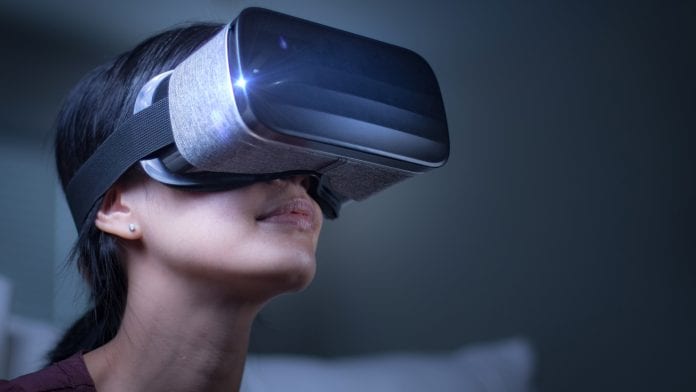
A new test using virtual reality can help to ease the pain from phantom limbs by tricking the brain.
The new test, using virtual reality (VR) technology, has been shown to help ease the pain from phantom limbs by tricking the amputee’s brain into thinking that it is still in control of a missing limb.
The test uses tricks on the mind by placing mirrors at an angle in front of the chest to create the illusion that the body is symmetrical.
The test was created by researchers at Aalborg University.
Using VR to trick the mind
Many amputees experience pain or discomfort from the limb they have lost – a phenomenon known as ‘phantom limb pain’, and the mechanisms of which are still unknown to science. To date, the most discussed theory concerns the sudden lack of input from the severed neural cords.
Bo Geng, Postdoc at the Faculty of Medicine at Aalborg University in Denmark, said: “The tactile representation of different body parts are arranged in the brain in a sort of map. If the brain no longer receives feedback from an area, it tries to re-programme its signal reception map. That is the most common conception of how phantom limb pain occurs.”
The test devised by the researchers has shown that is, by using the mirror, amputees pretend to do the same movements simultaneously with both hands, the brain in many cases can be convinced that it is in contact with an amputated hand.
The method has proven effective a number of times, and is the foundation for the new method that has been developed by Bo Geng in collaboration with Dr Martin Kraus and Master’s students Bartal Henriksen and Ronni Nedergaard Nielsen from Medialogy at Aalborg University.
By using VR, it is possible to create an experience of being present in a three-dimensional world where you can move around freely, grab things and interact with them.
Geng said: “The mirror therapy has some limitations because you have to physically sit down in front of a mirror, do the same movement in a confined space with both hands at the same time and keep your eyes on the mirror. The illusion can easily be broken. With Virtual Reality there is a much better chance of creating a convincing alternative reality.”
As part of the test the patients put on VR goggles and a glove, and small electrodes are placed on the residual limb.
By stimulating the residual limb with tiny electrical impulses, researchers tried to recreate the sensation of the phantom hand, and the patient played a number of different VR games that included using the phantom limb – such as grabbing a pole or pushing different buttons.
According to the participants, in the virtual reality it feels exactly as if you were using both hands.
Feeling the phantom limb
The new approach underwent its first clinical test at the China Rehabilitation Research Centre in Beijing. Here, two out of three amputees felt their phantom limb pain ease whereas the third one experienced a decrease in the frequency of phantom limb pain attacks.
Geng said: “Even though a person who has had a hand amputated can no longer see it, in many cases he or she can still feel it. This sensory conflict may be interpreted by the brain as pain. With this new method we try to overcome that conflict by providing an artificial visual and tactile feedback and in that way suppress the pain.
“Of course, we need to do more tests, but the results so far look promising.”
At the moment the system only works with upper body amputees, but students at Aalborg University are developing a version for people who have had a foot, or a leg amputated as well.
























